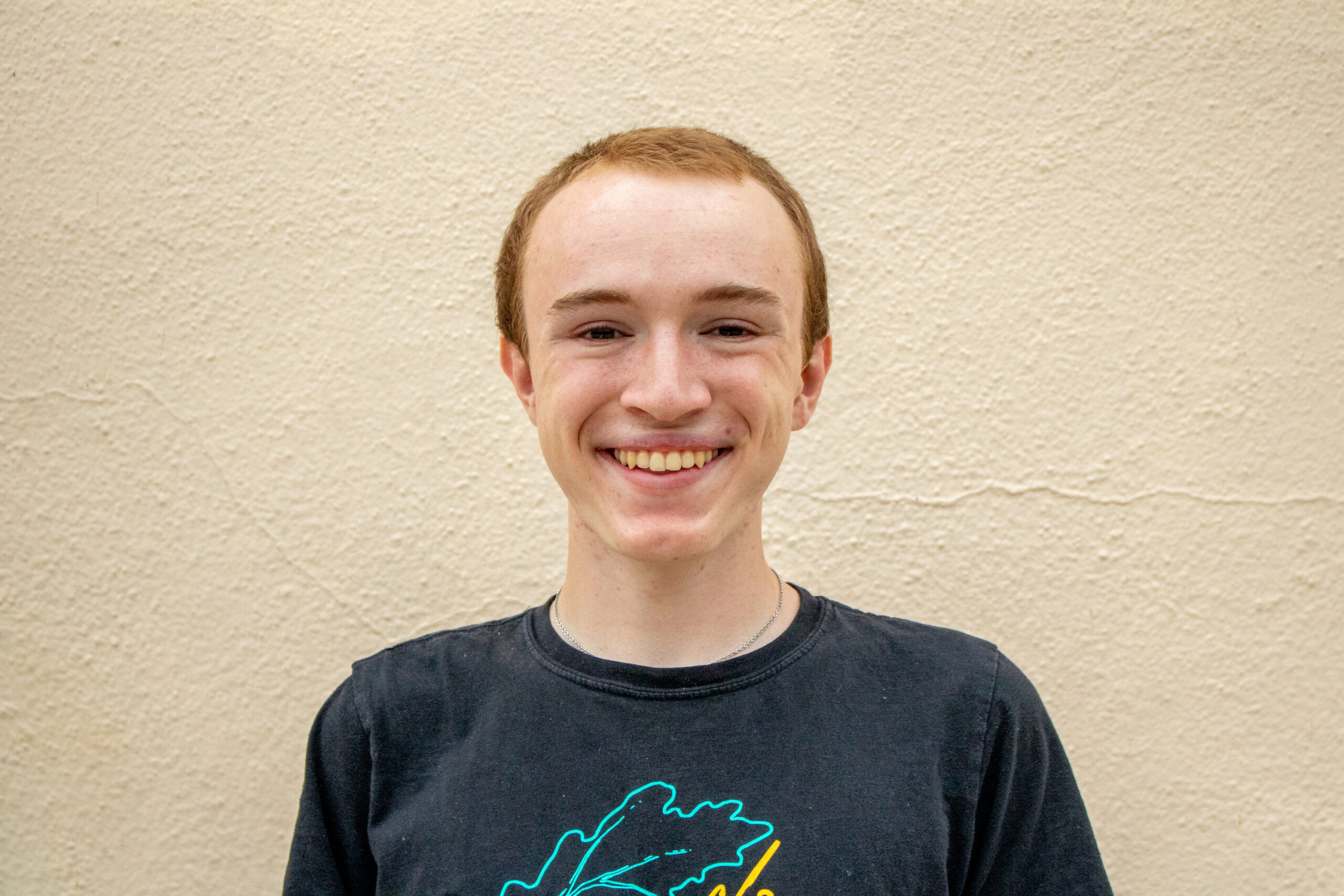With students back on campus four days a week and Santa Barbara County firmly in the Orange Tier, students are adjusting to a new kind of normal. This is Santa Barbara High School as it has never been before. Students wear masks and desks are spaced out three feet in classrooms. While some students still forget their mandatory lanyards that must be worn around campus, everyone has gotten used the entry process each morning, where students must have their Crisis Go badges ready to present. Overall these safety measures have seemed to prove very effective, and as more and more students and staff get vaccinated, the level of safety on campus continues to increase. We have reached a very strange point in this pandemic where students are beginning to return to their regular routines as conditions improve, but the threat of virus transmission still always looms.
Although community-wide and state-wide, positive COVID tests per capita are at some of the lowest levels in the nation, many parents have also recently noticed an uptick in the number of notifications they receive for positive COVID tests of students on campus. However, this tends to be more of a matter of testing and not actually the situation on campus. According to Roxanna Stern, Teacher Induction Coordinator for Santa Barbara Unified School District and a point of contact for COVID testing in the school district, the return to campus has also happened to align with an increase in youth sports competition. Many sports teams have only finally gotten the chance to play in the past few months, after a long period of on-campus training. However, when athletes compete, they are required by SB Unified to receive a COVID test. More testing leads to more cases being found which means that parents receive more messages about on-campus cases. Stern said that “A number of our athletes that we are testing are asymptomatic, […] but they have to test routinely to participate in sports and then COVID is being detected.” When COVID is detected, the district nurses led by head nurse Liz Christen determine who students may have been in close contact with. The CDC defines close contact as being within six feet of someone for more than 15 minutes. While this is one of the tools that the district uses, Stern said that they also have their own set of questions and metrics to determine who may actually be at risk and who will have to quarantine. Of course, new CDC guidance allows desks to be spaced three feet apart in classrooms because studies have found that this is still a safe distance for students to maintain. However, this is just the distance that is used as a mitigation effort to prevent the spread of COVID-19. When a case is detected, the more stringent six feet guidance is generally used. When it comes to cases on campus though, there has been very little, if any, on-campus spread. If three cases were to be found to be linked together, it would be considered an outbreak and more actions would be taken to determine the safety of the school environment. So far though, there has only been one case of student to student transmission district-wide.
Another part of the campus safety equation is vaccinations. On April 9, Santa Barbara County began allowing all residents 16 and older to get vaccinated. While the Johnson and Johnson and Moderna shots are only approved for adults, the Pfizer vaccine is available to 16 year olds. This is purely because it’s the only vaccine that included 16 year olds in its clinical trials. Many 16, 17, and 18 year old students have already been vaccinated for a multitude of reasons. Notably, CDC guidelines allow fully vaccinated individuals to gather indoors without masks with other vaccinated individuals. Fully vaccinated is defined as two weeks after the second dose in a two-dose series (i.e., Pfizer and Moderna) or two weeks after the one-dose Johnson and Johnson shot. For many students who have been unable to properly see their friends for over a year, this has been a moment of great excitement. While students who work in food-service or other essential industries have been able to get vaccinated for a while, many more are just now reaching that fully vaccinated threshold. Having many vaccinated students on campus is also good for everyone else’s safety. While it’s unclear if COVID can spread through fully vaccinated individuals, the more people that are vaccinated, the closer we are to herd immunity. This is the point at which COVID runs out of people to infect, and we see case rates drop dramatically. While only about half of students at Santa Barbara High School are currently able to get a shot, Pfizer is looking to expand its availability to 12 through 15 year olds in the next few months. This means that theoretically all students could be vaccinated by the start of the school year next year.
With so much changing so quickly, the school district has refrained from making hard plans for the 2021-2022 school year. They plan to once again welcome students back to classes, this time for 5 days a week. Students who wish to will also be able to remain online, but it probably will not resemble the current mix of in-person and Zoom learning that is happening in our classrooms right now. Most likely, masks will still be an important part of this situation as the virus does continue to percolate at least somewhat. A survey was recently sent out to determine who may plan to study fully online in the next school year. Another issue is that federal, state, and local governments have not produced guidance for next school year yet. Without this crucial information, the school district can’t know what they are legally able to do and what is safe for everyone involved. However, SB Unified Superintendent Hilda Maldonado and members of the district’s COVID response team are in constant contact with local public health officials. The main thing Christen said that she has heard is simply that we can’t make any predictions. There are too many variables and the situation continues to evolve quickly. As we get closer to that goal of herd immunity though, Christen said that we have better chances of returning to what people call “normal.”
Although restrictions are beginning to lift, and Governor Gavin Newsom plans for a “full reopening” of the state by June 15, it’s important that people continue to keep their guards up. A majority of Santa Barbara County’s population has now been at least partially vaccinated, but many vulnerable people remain unprotected. Large gatherings should still be avoided and masks should be worn in public, even after the state reopens. This has certainly been a year unlike any other, but we do appear to be nearing the end. If people continue to do their part, and everyone, including students, get vaccinated when they are eligible to, this school year will soon be an archaic story that is passed on, rather than a hard reality that students must continue to endure.





Be First to Comment